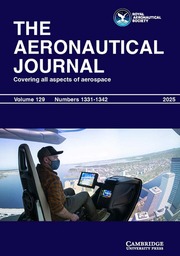Crossref Citations
This article has been cited by the following publications. This list is generated based on data provided by Crossref.
Tizzi, S.
2005.
Polynomial series expansion for optimisation of wing plane structures in idealised critical flutter conditions.
The Aeronautical Journal,
Vol. 109,
Issue. 1091,
p.
23.

